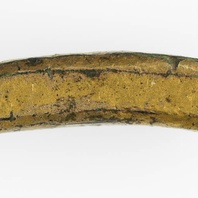
Viking Objects
Forged Hack-gold Rod (CM 595-2010)
This forged hack-gold rod comprises a curved section of gilt copper-alloy. It is square in cross-section and is broken at both ends. It shows that someone near Torksey was trying to con others by passing copper-alloy as gold. Like hacksilver, hack-gold was used to pay for items by weight of precious metal. The buyer and seller would agree the value of an item and pieces of silver or gold would have been cut up and weight out until the right amount had been paid. Gold was much less common among the Vikings than silver.
Read More
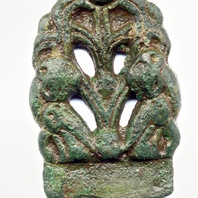
Viking Objects
Anglo-Scandinavian Strap-End (LEIC-0C2B81)
This example of an Anglo-Scandinavian copper-alloy strap-end displays foliate decoration and features a mixture of the Anglo-Saxon Winchester style and Anglo-Scandinavian zoomorphic heads. It is classified as Thomas Class E, Type 1.
Read More
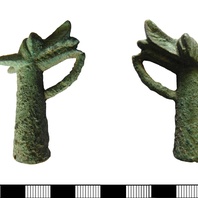
Viking Objects
Drinking-Horn Terminal (LIN-F0DD46)
This probable drinking horn terminal has a hollow conical socket with three rivet-holes at the attachment end. The socket is ribbed and at the top it has an integral animal head in the form of a mythical creature, most likely a dragon.
Read More
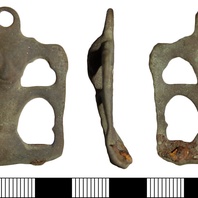
Viking Objects
Stirrup-Strap Mount (BH-D273BF)
This copper-alloy stirrup strap mount is classed as a Williams Class B Type 2 and is decorated with an openwork zoomorphic design.
Read More
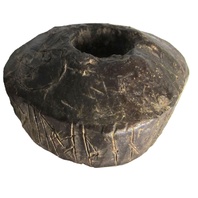
Viking Objects
Saltfleetby Spindle Whorl (LIN-D92A22)
A lead spindle whorl found at Saltfleetby St Clement, Lincolnshire, and inscribed with runes. The dating of the spindle whorl is uncertain, and dates in the late Viking Age, the early eleventh century, or even the twelfth century, have been suggested. The spindle whorl is inscribed with Scandinavian runes that appear to mention the Norse gods Odin and (possibly) Heimdall. The object is likely to have been produced locally, though the runes demonstrate contacts with the Scandinavian world of the time, perhaps especially Norway. John Hines has suggested the translation ‘Óðinn and Heimdallr and Þalfa, they are helping you, Úlfljót, and …’. For further discussion of the text, see the open-access article by Jesch referenced below. For more on runes, see our Runes page.
Read More
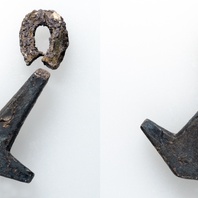
Viking Objects
Thor’s Hammer Pendant (1989-59/7224)
A silver hammer-shaped pendant found in Grave 511 at Repton. This is the grave of a man who appears to have died violently, taking a vicious cut to his loins. These may have been worn to show devotion to the god Thor, or to secure the god’s protection, although there is little evidence to support this interpretation. Pendants like this have been found made of lead, copper alloy, silver and gold, showing that many different strata of society could have worn them.
Read More
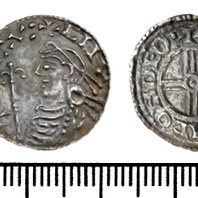
Viking Objects
Coin of Cnut the Great (LEIC-4B7888)
This Short Cross Type silver penny was minted in the name of King Cnut between 1024 and 1030 in the Derby mint by the moneyer Swartinc. The location of discovery is unknown. Minting coins was a way of controlling the means of exchange within a kingdom and which created a more easily administered standardized system of trade. Moreover, the coins themselves were often used as propaganda, portaying symbols and statements that gave off a desired message. The Vikings later used the minting of coins to legitimize their own rule.
Read More
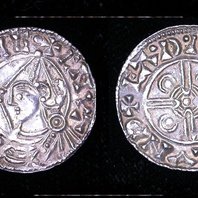
Viking Objects
Coin of Cnut the Great (LEIC-3E8CC4)
This silver Helmet IIIc Type penny was minted for King Cnut of England in London. The obverse inscription reads CNVTREXANG while the obverse reads EADPOLD ON LVND. Minting coins was a way of controlling the means of exchange within a kingdom and which created a more easily administered standardized system of trade. Moreover, the coins themselves were often used as propaganda, portaying symbols and statements that gave off a desired message. The Vikings later used the minting of coins to legitimize their own rule.
Read More
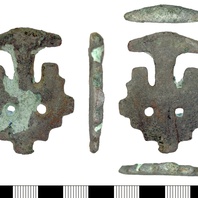
Viking Objects
Copper-Alloy Die Stamp (DENO-698D71)
A copper-alloy die, known as Hiddensee-Rügen type, used for making pressed silver or gold sheet appliqués, which were applied to the back-plate of pendants or used as a base for filigree and granulation work.
Read More
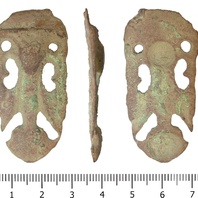
Viking Objects
Tongue-Shaped Strap-End (DENO-1268B3)
An incomplete, copper-alloy strap-end with anthropomorphic designs. These types of strap-ends were popular in both Scandinavia and on the Carolingian continent between the 9th and 10th centuries and were regularly used to embellish baldrics. Strap-ends came in various styles and were fairly common throughout the Viking world. They were used to decorate the ends of belts and to stop them getting damaged.
Read More
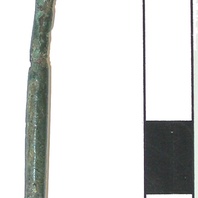
Viking Objects
Expanded-Head Pin (1986/975-AE86)
A copper-alloy pin found at the site of the Little Chester Roman fort. This loose find was found on top of a Roman metalled surface. It has a lozenge-shaped head that is typically Anglo-Scandinavian, but the lack of a secure finds context and its proximity to a Roman surface indicates that it could be Roman.
